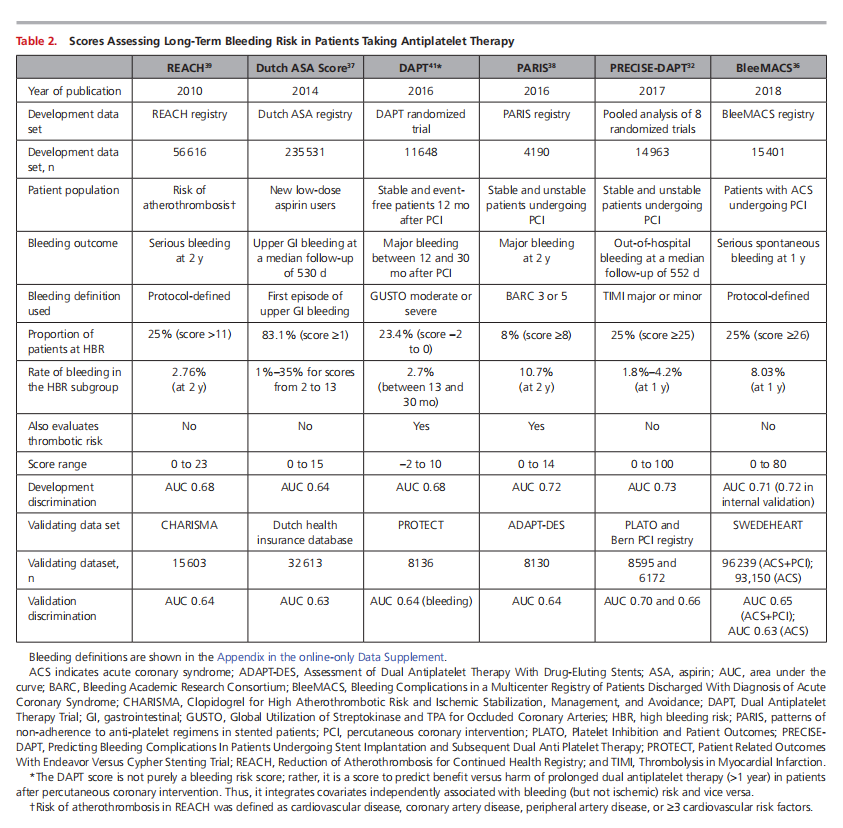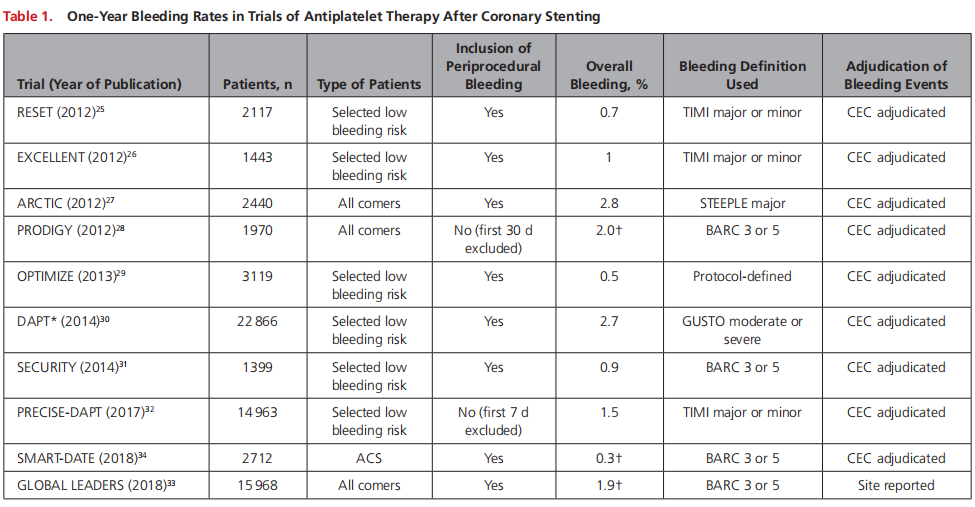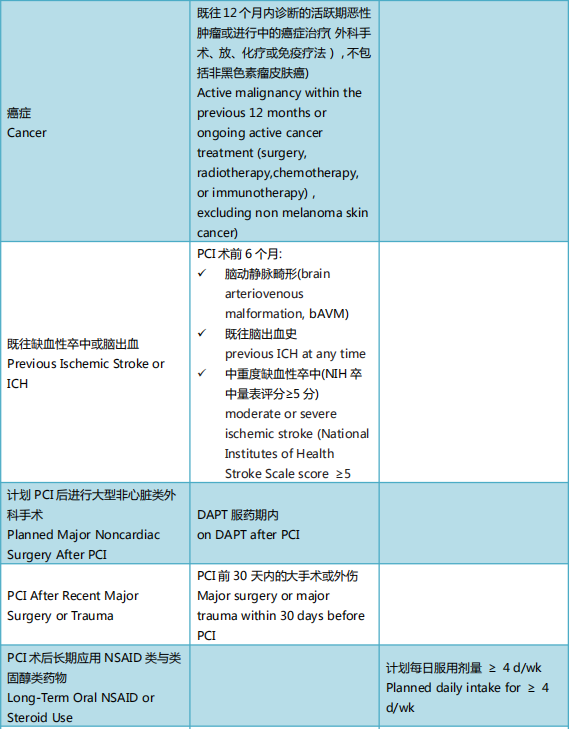


-
-
Scientific LibraryAcute Coronary Syndrom ASCVD Prevention Bifurcation Stenting Cardio-Oncology Congestive Heart Failure DAPT Duration Drug Coated Balloon Fractional Flow ReserveNewsCases VideosE-LearningIndustry Insights
- LIVE
-
 Article Link
Article Link

EUROPCR 2019 - ARC Defined High Bleeding Risk in PCI Patients
CBSMD
Currently available bleeding risk scores are listed in Table 2. PRECISE-DAPT with Class IIb, Evidence A was recommended by ESC in 2017.

These risk scores were developed based on randomized trials with significant heterogeneity with respect to the patient population, such differences highlight the need for a standardized definition of HBR:
1. The differences in eligibility criteria (all-comer, patients at increased bleeding risk) and enrolled patient populations in completed trials are reflected in the differences in bleeding event rates, varies from 3.5-7.3%。
2. Patients unsuitable for long-term DAPT continue to be systematically excluded.
3. Clinical trials of DAPT strategies after stenting have also excluded patients at HBR, with reported major bleeding rates at 1 year varying between 0.3% and 2.8% (Table 1).
4. Subjects at HBR are still underrepresented in contemporary studies.

To optimize the identification and management of patients at high bleeding risk under going PCI, "Defining High Bleeding Risk in Patients Undergoing Percutaneous Coronary Intervention: A Consensus Document From the Academic Research Consortium for High Bleeding Risk" proposed the first pragmatic approach to a consistent definition of high bleeding risk in clinical trials evaluating the safety and effectiveness of devices and drug regimens for patients under going PCI. This white paper covers 20 criteria (14 major criteria and 6 minor criteria) which can assist clinicians identify patients with 1 major criterion or 2 minor criteria as high bleeding risk rapidly and make clinical decisions accordingly.



http://www.cbsmd.cn Contact us by cbs@cbsmd.cn
Copyright ⓒ CBSMD Nanjing China. All rights reserved.



